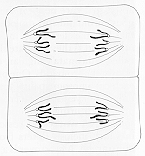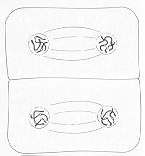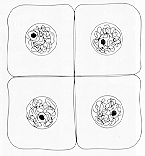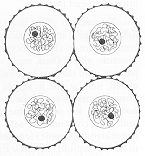Controls
Meiosis
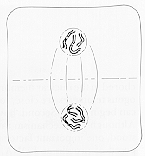 10. 10. 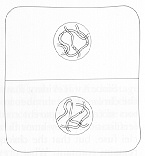 11. 11. 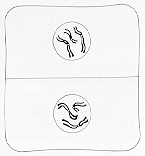 12. 12. 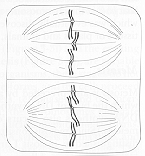
Meiosis and pollen formation in Lilium regale. (Figures from: Suzuki et al. (1986), p. 37) |
A cell wall (in plants it is a cell wall, as in the example shown here; in animals it is a plasma membrane) forms, dividing the original cell into two daughter cells (figures 9 and 10). Each of the two new cells has a full compliment of genetic material. That's soon to change. The chromosomal material lines up at the midline of each of the two cells again (figure 11) and the chromosomes are again pulled apart (figures 12, 13, and 14). New cell walls are formed, creating four cells, each with a half compliment of genetic material (figures 15 and 16).
In animals the result of meiosis is four sperm or one egg. For eggs the genetic material is divided up equally, so that each cell gets a half complement of chromosomes, but the rest of the cellular goodies (e.g., cytoplasm, etc.) ends up going into only one of the four cells. This cell becomes the egg while the other three wither away.
